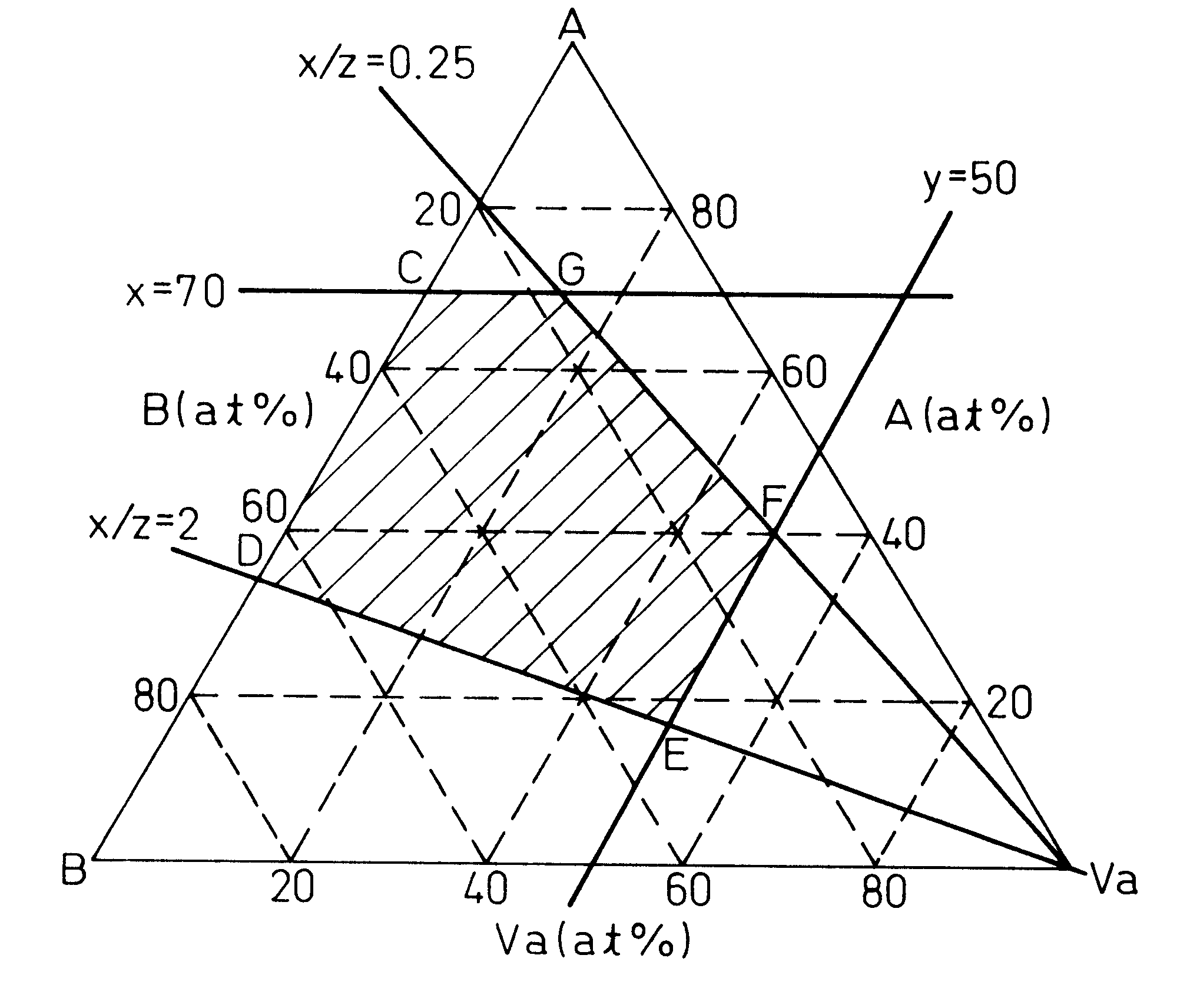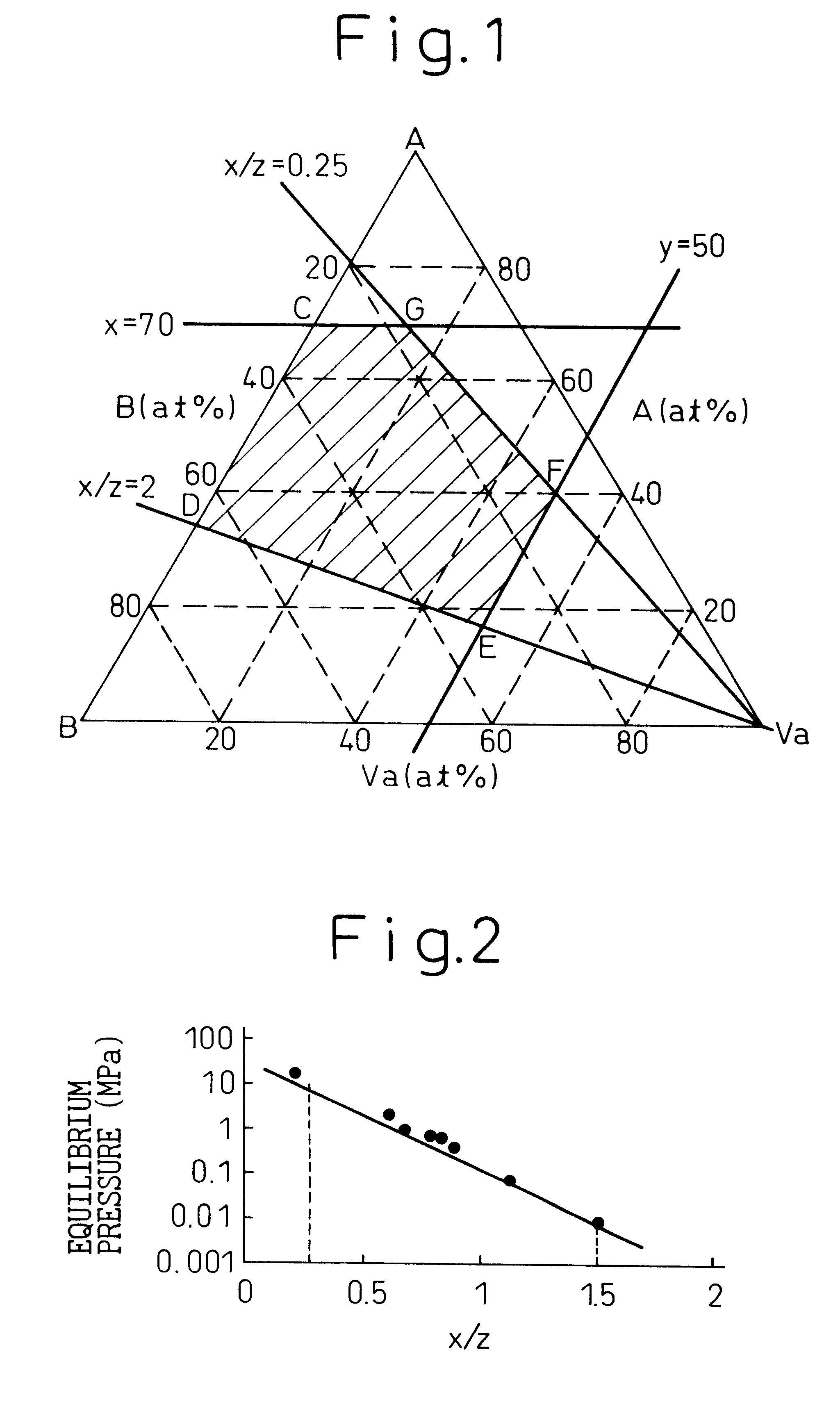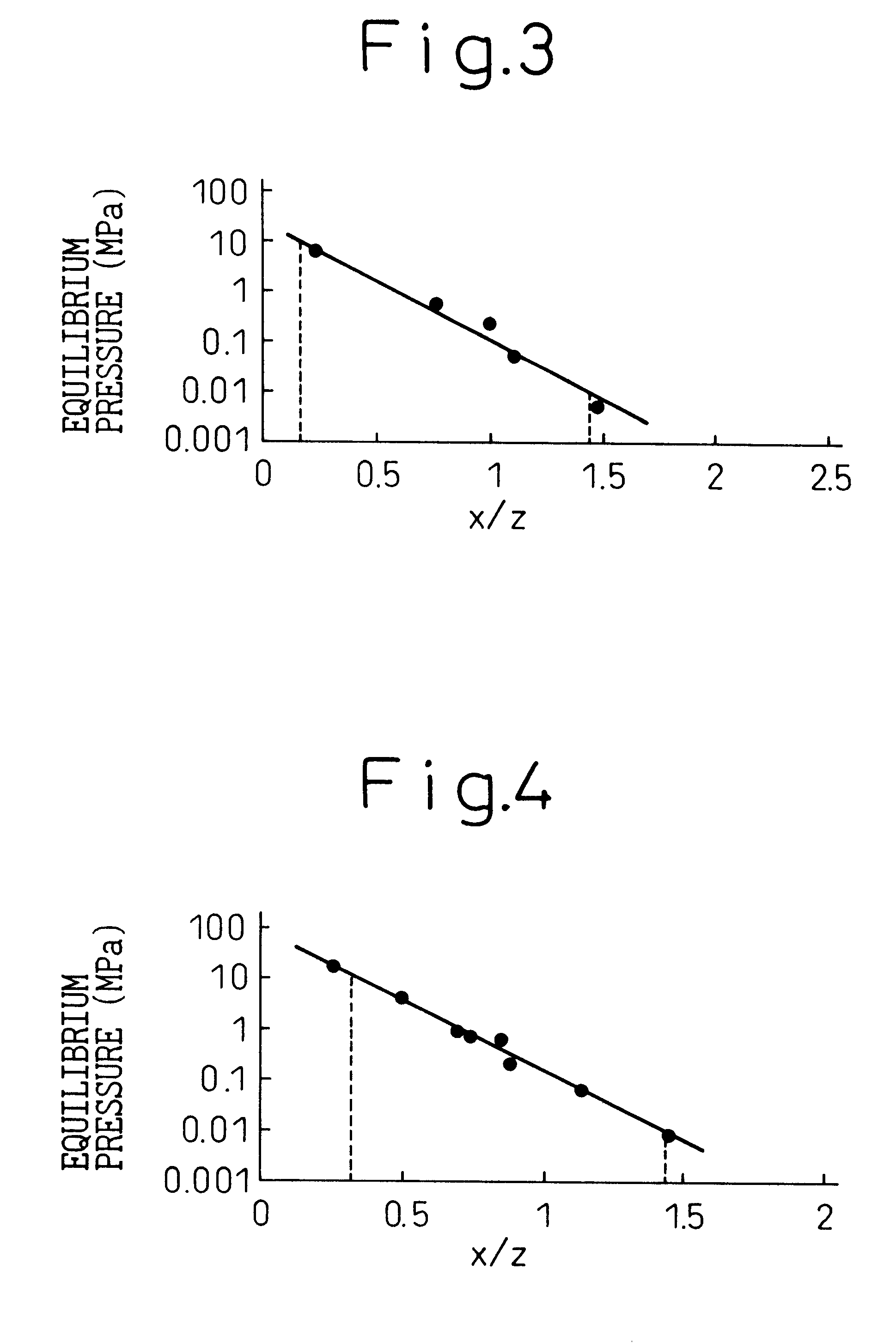Hydrogen-absorbing alloy
- Summary
- Abstract
- Description
- Claims
- Application Information
AI Technical Summary
Benefits of technology
Problems solved by technology
Method used
Image
Examples
example 1
The measurement described above was conducted in this Example for the Ti-V-Cr-Fe system alloys having the compositions tabulated in Table 1. The results were shown in FIG. 2 in terms of the relationship between an x / z value and the equilibrium pressure.
The alloy composition Ti.sub.26.5 -V.sub.40.0 -Cr.sub.33.5 in Table 1 was the material proposed by the present inventors in Japanese Patent Application No. 8-281822. Though this material had excellent characteristics, it was out of the range of the present invention because it did not contain Fe.
It could be understood that other alloys contained Fe, had characteristics at least equivalent to those of the Ti-Cr-V ternary alloys and had excellent characteristics even when economical ferrovanadium, etc, was used as the starting material.
The value x in Table 1 and FIG. 2 is the sum of the group A elements and the value z is the sum of the group B elements. The equilibrium pressure is the value at the mid point of the plateau flat portion ...
example 2
In this Example, the measurement was carried out for Ti-V-Mn-Fe system alloys having the compositions tabulated in Table 2. The results were shown in FIG. 3 in terms of the relationship between the x / z value and the equilibrium pressure.
The x value in Table 2 and FIG. 3 is the sum of the group A elements and the z value is the sum of the group B elements. The equilibrium pressure was a value at the mid point of the plateau flat portion of the pressure-composition isothermal line at 40.degree. C. In this case, when the equilibrium pressure fell within the range of 0.01 to 10 Mpa, it can be judged that the alloys could be applied to hydrogen tanks and to negative electrode materials of Ni-MH cells by controlling the temperature and pressure in the system.
Furthermore, it could be confirmed that the alloys of this Example exhibited the excellent equilibrium pressure described above, the phase of the body-centered cubic structure was at least 50% in terms of the phase fraction, and its l...
example 3
In this Example, the measurement described above was carried out for the Ti-V-Cr-Fe-Ni system alloys having the compositions tabulated in Table 3. The results were shown in FIG. 4 in terms of the relationship between the x / z value and the equilibrium pressure.
The x value in Table 3 and FIG. 4 is the sum of the group A elements and z is the sum of the group B elements. The equilibrium pressure is the value at the mid point of the plateau flat portion of the pressure-composition isothermal line at 40.degree. C. It can be concluded in this case that the alloys could be applied to hydrogen tanks and to negative electrode materials of Ni-MH cells by controlling the temperature and the pressure in the system.
Furthermore, it was confirmed that the alloys of this Example exhibited the excellent equilibrium pressure described above, the phase of the body-centered cubic structure was at least 50% in terms of the phase fraction, and its lattice constant was at least 0.2950 nm but not greater t...
PUM
| Property | Measurement | Unit |
|---|---|---|
| Lattice constant | aaaaa | aaaaa |
| Lattice constant | aaaaa | aaaaa |
| Fraction | aaaaa | aaaaa |
Abstract
Description
Claims
Application Information
 Login to View More
Login to View More - R&D
- Intellectual Property
- Life Sciences
- Materials
- Tech Scout
- Unparalleled Data Quality
- Higher Quality Content
- 60% Fewer Hallucinations
Browse by: Latest US Patents, China's latest patents, Technical Efficacy Thesaurus, Application Domain, Technology Topic, Popular Technical Reports.
© 2025 PatSnap. All rights reserved.Legal|Privacy policy|Modern Slavery Act Transparency Statement|Sitemap|About US| Contact US: help@patsnap.com



